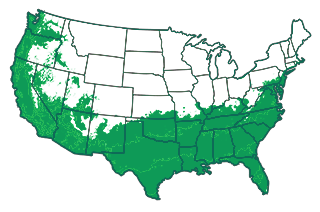About
Celeste Fig trees are cherished for their compact size and prolific fruiting.How tall does a Celeste Fig tree grow?
Typically, a Celeste Fig tree reaches heights of 10 to 15 feet, making it manageable for small gardens and urban settings. While relatively compact, it maintains a wide canopy spread that provides ample shade and aesthetic appeal. Regular pruning can help control its height and shape, ensuring it remains suitable for your space.How long does a Celeste Fig tree live?
Celeste Fig trees are long-lived, often thriving and producing fruit for several decades with proper care. In favorable conditions, they can live for up to 50 years or more, continuing to enhance your garden with their sweet figs. Longevity is supported by consistent care practices, including proper watering, fertilization, and pruning.How fast do Celeste Fig trees grow?
Celeste Fig trees are fast-growing, typically adding 12 to 18 inches of new growth each year under optimal conditions. Their growth rate can be influenced by factors such as climate, soil quality, and care practices. Proper planting and regular maintenance can maximize their growth potential, ensuring a healthy, productive tree.How to care for Celeste Fig trees?
Caring for Celeste Fig trees is straightforward, requiring attention to watering, fertilization, and sunlight. Ensure regular, deep watering, particularly during the growing season, while allowing the topsoil to dry out between waterings to prevent overwatering. Fertilize your figs with a balanced, slow-release fertilizer in spring and summer to support lush growth and fruiting. For optimal fruit production, position trees in full sun and provide protection from extreme temperatures or winter frost.When to prune Celeste Fig trees?
Pruning should be performed in late winter or early spring before new growth begins, allowing you to shape the tree and remove any dead or diseased wood. Regular pruning helps maintain the tree's size and health while encouraging vigorous new growth. Pruning at the right time promotes better air circulation and sunlight penetration, vital for productive fruiting.How to prune Celeste Fig trees?
To prune Celeste Fig trees effectively, start by removing any dead, diseased, or crossing branches to improve airflow and reduce the risk of disease. Shape the tree by trimming back branches to maintain a balanced, open structure, encouraging sunlight to reach the inner canopy. Regular pruning ensures a manageable size, enhances fruit production, and supports the overall health of the tree.Why do we like Celeste Fig?
The Celeste Fig tree is cherished for its delectable, honey-flavored fruits that make for a delightful homegrown treat. Beyond its delicious yield, this tree offers beauty and adaptability, thriving in various climates while enhancing your garden or landscape aesthetic.| Mature Size | 10–15 ft tall × 10–15 ft wide |
| Sunlight | Full (6-8 hours) |
| Spacing | 10–15 ft |
| Harvest Season | June to July |
| Pollination | Self-pollinating |
| Uses | Fresh eating, preserves, baking |
| Water Requirements | Moderate; moist, well-drained soil |

Growing Zone: 7-10
When planting Celeste Fig trees, choose a spot with full sun exposure and well-draining soil to support vigorous growth and fruiting. Dig a hole twice as wide and just as deep as the root ball, place the tree in the hole, and fill it with the native soil mixed with compost. Water thoroughly after planting to help the roots establish and eliminate air pockets.
The ideal time to plant Celeste Fig trees is during the spring or fall when temperatures are moderate and conducive to root establishment. Planting during these seasons allows the tree to acclimate before the stress of summer heat or the cold of winter. Ensure soil temperatures are consistently warm for root development, avoiding the risk of frost damage.
When planting multiple Celeste Fig trees, space them 10 to 15 feet apart to accommodate their mature canopy spread and root systems. This spacing ensures adequate sunlight penetration and air circulation, reducing the risk of diseases and promoting optimal growth. Proper spacing also allows each tree room to grow without competition for nutrients and resources.


